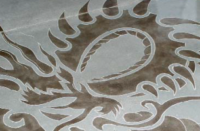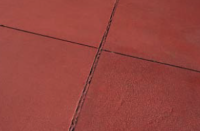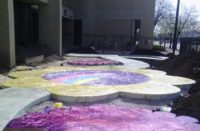When treating exterior surfaces with an acid etch begin by pouring one part muriatic acid into five parts water. (Always wear suitable protective rubber gloves and eye wear when working with acid)
Start by applying mixture with Hudson Sprayer to a 10′ by 10′ square. (Contractors often make the mistake of biting off too big of an area and not treating the complete surface adequately.)
If treated surface begins to turn yellow your acid mixture is being applied too heavily. It is best if your mixture produces more of a white foam as this will lead to the best surface profile. It is also important to scrub the treated surface with a suitable nylon brush prior to rinsing.
Acid should be allowed to remain on the surface for 3-5 minutes then rinse thoroughly. When treating the next 10′ by 10′ square be sure not to allow acid onto the treated areas. When pressure washing exterior, surfaces use a minimum of 1500 psi (hot or cold), a 15° tip, cleaning a maximum distance of 3" to 6" from the surface with a 3" pattern and a 50 percent overlap.
The basic procedure for acid etching is to mix the acid using a 30-70 dilution rate (30 percent muriatic, phosphoric, or other acid solution to 70 percent water), and to use a garden sprayer can to sprinkle it on the surface.
A floor-scrubbing machine can work the solution into the concrete and break free what the acid is etching. After this process is completed, contractors should neutralize the acid and rinse the surface thoroughly.
The most important part of etching is to apply the acid uniformly. Some experts recommend wetting the surface before applying the acid to create a damp but not wet, area. The object of etching is to get floors or any other surface to a texture of 120-grit sandpaper.
It’s best to work in small areas to allow the solution to be removed by vacuum before the acid dries and leaves a residue. Never allow the acid solution to dry on the floor. That’s where you get residue and then you have to re-etch. If a residue remains, the coating bonds to it instead of the concrete.
Important Safety Tip
Remember to always pour the acid into the water and never the water into the acid.














